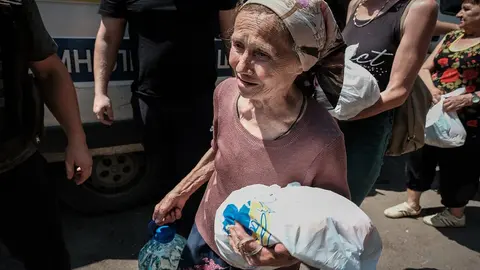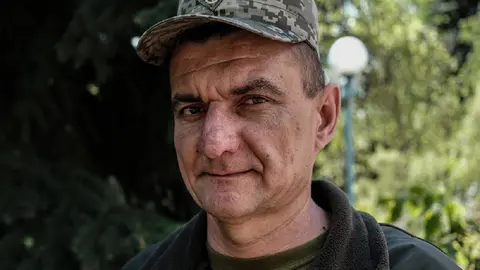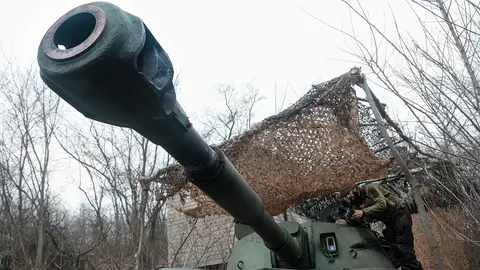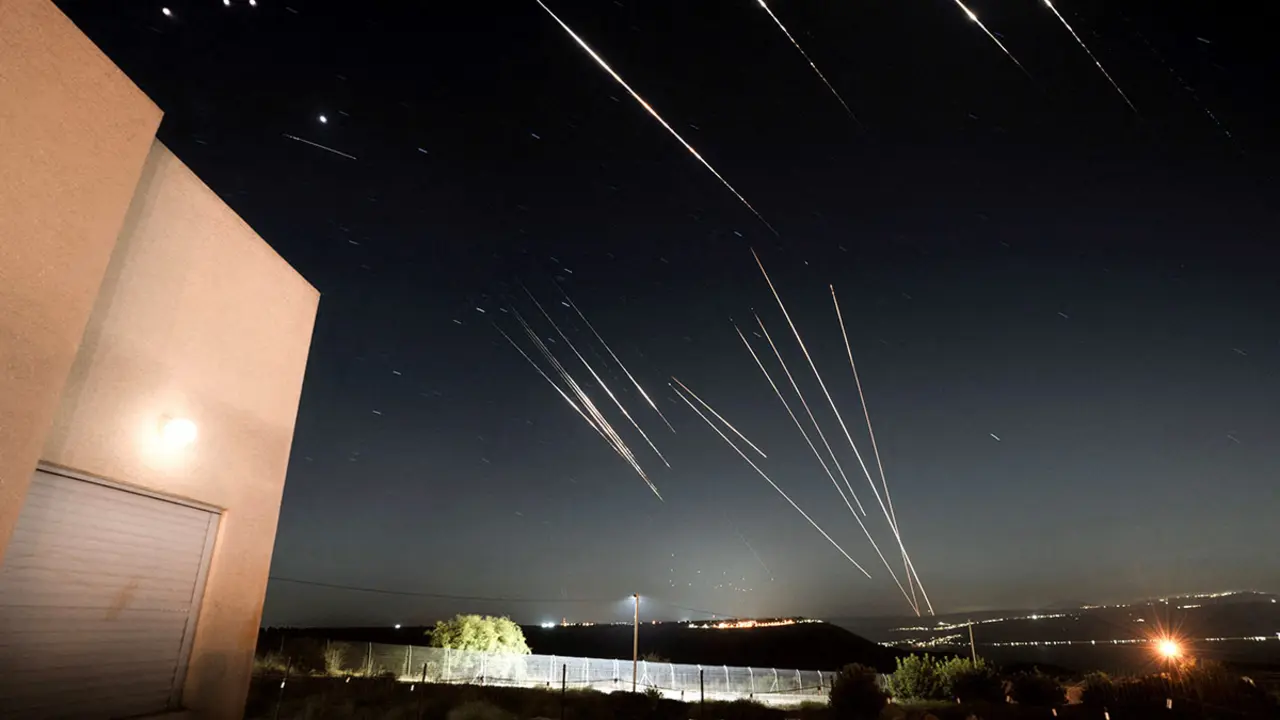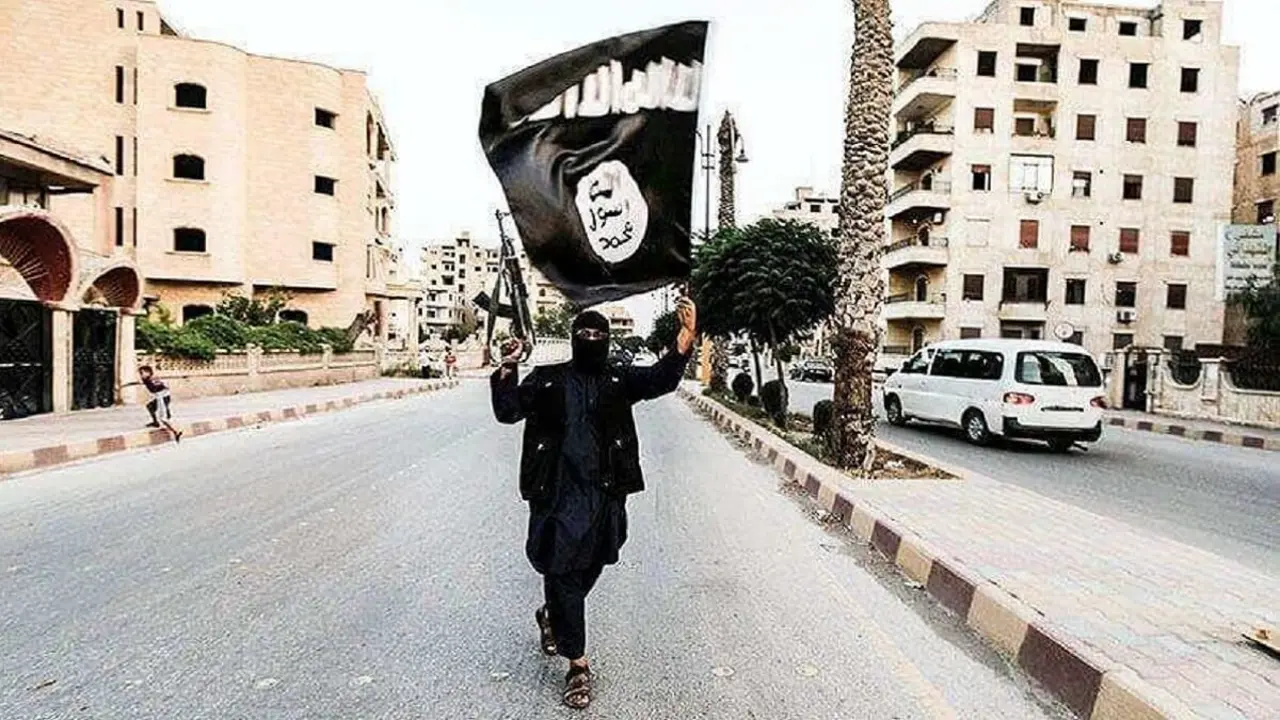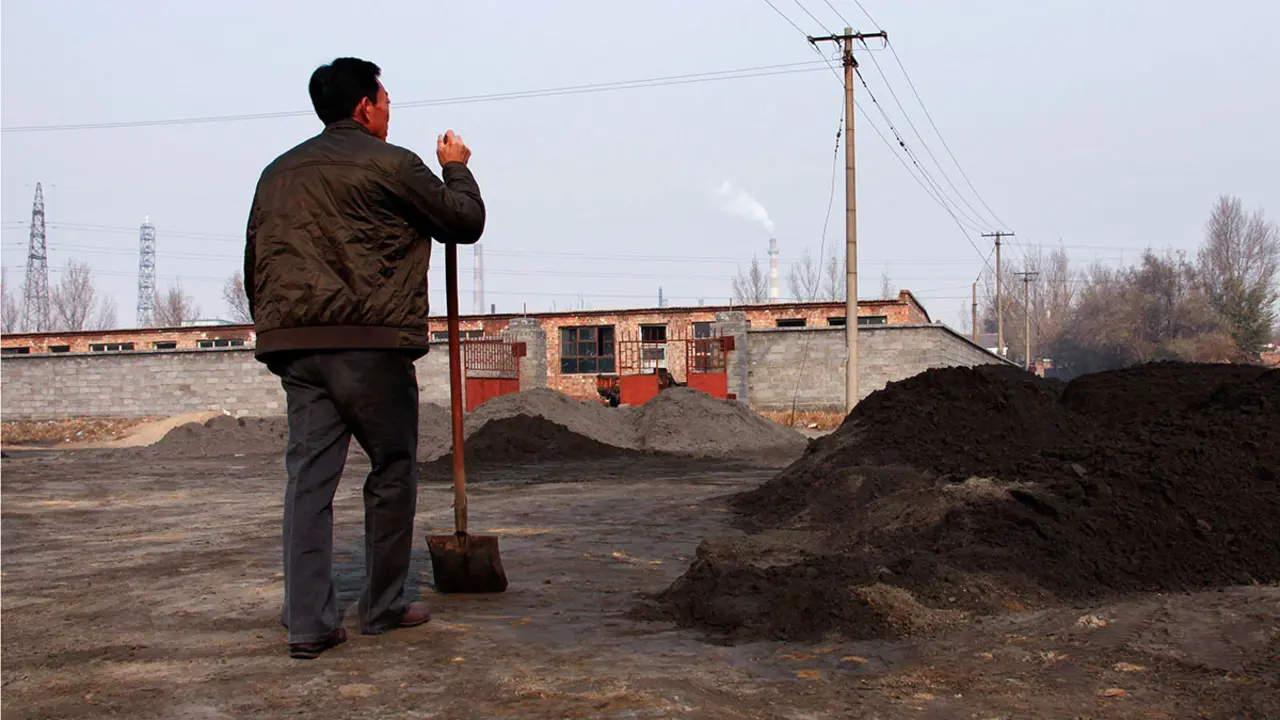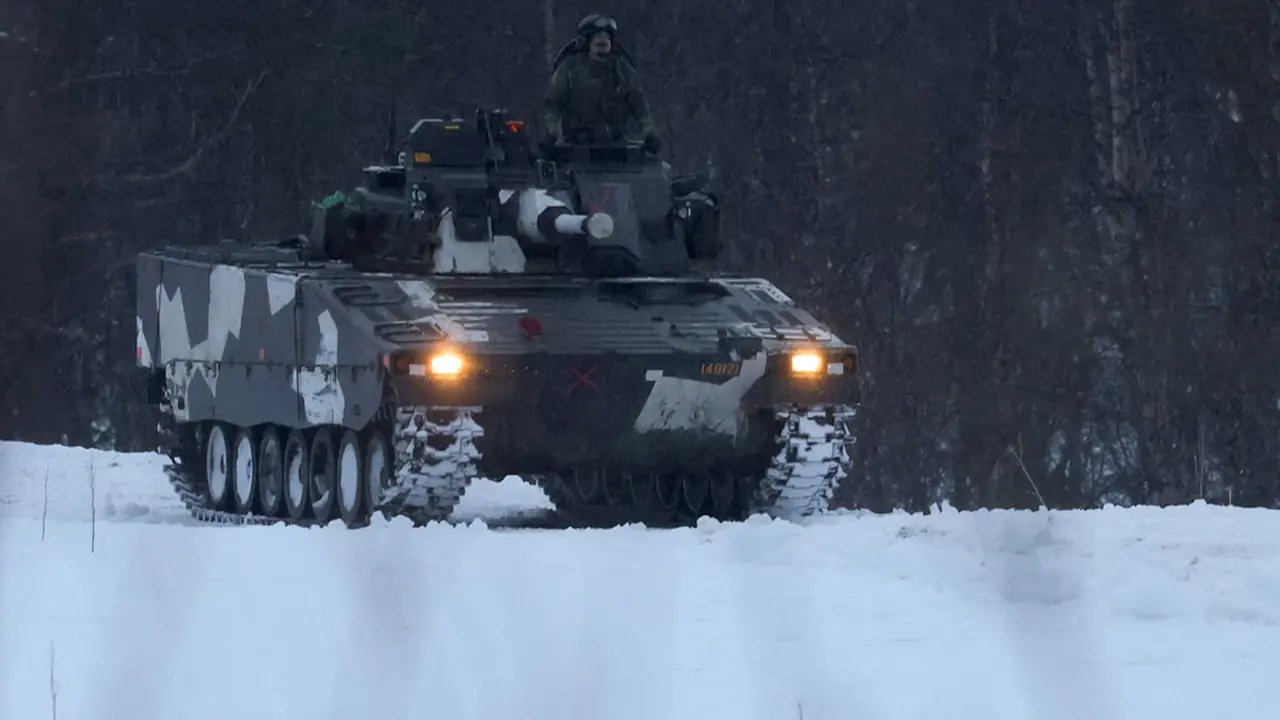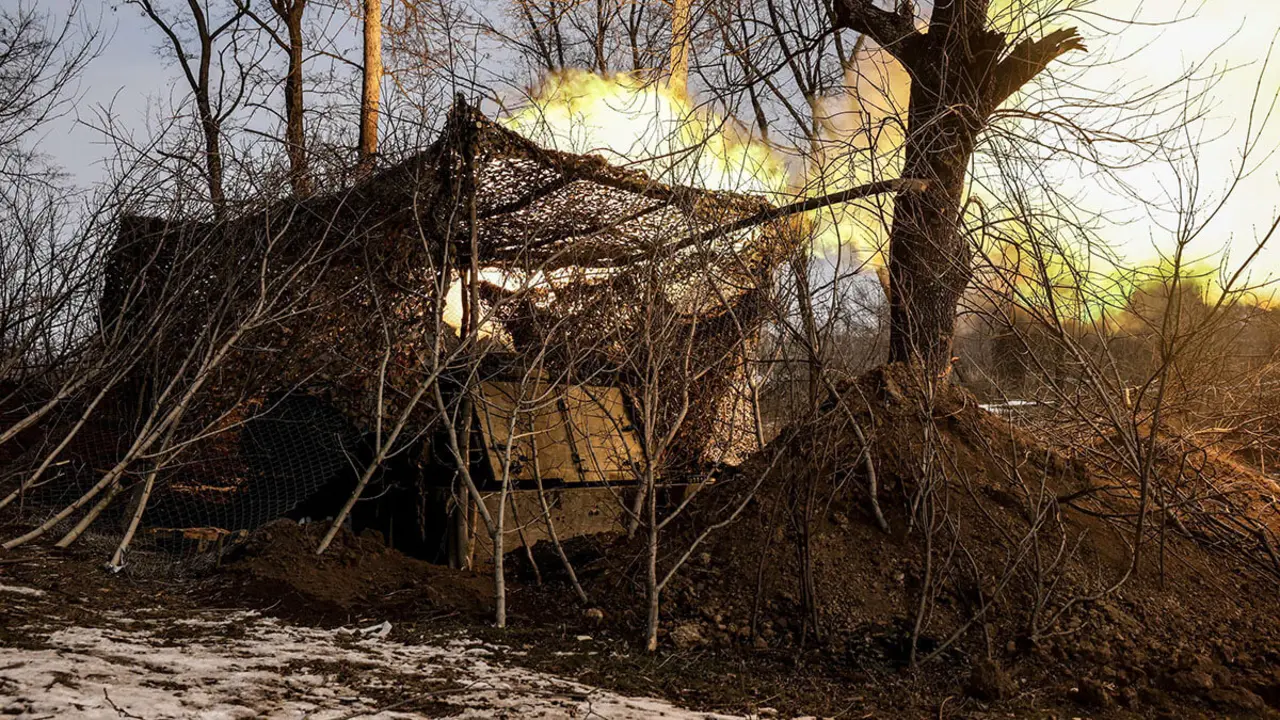A day at war: Ukraine continues to fight for its independence on the front line

"War is an interesting thing: when you are not sent to work, you know that everything is going well on the battlefield," reflects Yaroslav, the commander of a GRAD battery of the 22nd Mechanised Brigade of the Ukrainian Army, amused. But despite his words - and his sense of humour - the fact remains that Ukrainian artillery is working around the clock in Donetsk, where they have several of the most active battlefronts open at the moment.
Yaroslav's position is very close to Bakhmut, and from there they provide cover for the infantry fighting tooth and nail against Russian troops in Klishchiivka, Andriivka and Zaitseve. Camouflaged in a wooded area, one platoon operates and maintains one of the brigade's three Soviet-designed BM-21 multiple rocket launchers.
A single GRAD is capable of sweeping 16 square kilometres of terrain in just one minute. "The flight time of each projectile is 52 seconds," says the commander. Today, however, it will take more than ten interminable hours for the radio call to arrive with the order to attack. To paraphrase Yaroslav, when they don't call, it means all is well on the battlefield, so I take the opportunity to share a day at war with the Dombas gunners.
"The machine is always ready, and when we get the radio call and they give us the coordinates of where to launch the attack, in 6 or 7 minutes we are on the move," explains the commander as he leads me to the place where "the machine" is waiting.

The rocket launcher is imposing. It consists of 40 tubes, which are mounted on a sturdy truck. Yaroslav's men prepare to load them with 40 lethal projectiles that will be launched against the Russian positions. "Well, not all of them are lethal: we have ammunition from different countries, and the ammunition that comes from Pakistan is not always effective. It misses too much," complains the commander.
There are also shells from Malaysia and Poland - the latter are much better - which are distinguished by the colour of the paint that covers them. They are stored in a kind of pit they have dug for themselves, custom-made, near the GRAD. Perfectly camouflaged.
"We store them without a detonator," the commander continues to explain as one of the soldiers takes out the metal tips from a small wooden box that have to be screwed onto the projectiles - one by one - before loading them into the rocket launcher tubes. "It took us 12 minutes to attach the detonators and load the 40 shells into the BM-21," he says.
NO HOLIDAYS IN WAR
Somewhere in an undisclosed location there are two other positions like this one, also commanded by Yaroslav. A complete battery. And a platoon is in charge of maintaining and operating each of these mobile artillery pieces. There are more than thirty men working at any one time, and just as many resting so that they can be relieved when their rotation is over.

Rotations here last a full month: four weeks on and four weeks off - except for the commander, who never stops. "My last holiday was in August last year," he recalls. He is 28 years old and has two children, and his wife is also an officer in the Ukrainian army.
Yaroslav joined the army three years ago, not knowing that a war like this would happen; before that, he was a history teacher. At the beginning of the invasion, he was stationed in Saltivka - in the north of the city of Kharkiv - which at the time was a kind of grey zone that held the sad record of being one of the most heavily shelled areas in Ukraine.
Every man on the frontline today - made equal by the uniform - has his own story. But in most cases it is very similar: family members who are refugees in other European countries, friends who have fallen in combat, and the will to continue defending their homeland. The days go by waiting for those radio calls ordering them to attack and, in the meantime, they live together in the position as if they were one big family.

They prepare the food, make the beds and clean themselves carefully. They have become accustomed to the strange soundtrack formed by the roar of the artillery, the one they fire and the one coming back as well. "Yesterday we were attacked and had to stay in the shelter for more than five hours," they say, as they show me the huge hole dug in the ground where they shelter from Russian fire.
"There is water, food and an internet connection; we can stay there as long as we need to. Just get in as quickly as possible when the attack starts," they warn me. "Most of the time, the Russians just return fire to stop us from attacking, not because they have a defined target. They shoot a lot, but their hit rate is very low for that reason," they add.
PLAYING HIDE AND SEEK
One of the men is always at the radio. On a computer, he keeps a close eye on the images sent by the brigade's drone group. "They work all the time, looking for targets and monitoring Russian troop movements," he explains.
But the Ukrainians are not the only ones who are constantly using these unmanned vehicles. Russia is currently ahead of them in the drone war: it has more and better drones, and they are complicating the daily work of Ukrainian soldiers in all the frontline positions I have been able to see over the last few months.

"We play hide-and-seek with the Russians all the time, their drones are everywhere, so we pick up the piece before the last rocket falls when we go out to make an attack, and thanks to that speed we have a very small percentage of casualties," Yaroslav explains. "The Russians now have more drones than we do, you work by constantly looking at the sky."
As well as having scout drones - which are becoming increasingly sophisticated, including improvements such as thermal cameras - these unmanned vehicles are being used to launch grenades and small-calibre projectiles with astonishing accuracy. And kamikaze drones are also being employed, wreaking havoc on tank units.
SMOKING KILLS
"We can go out to work four times in one day, or none at all," says the commander, "there are days when the waits take forever, and others when you don't even have time to smoke a cigarette," he adds as he looks through a sort of ledger, jotting down dates and numbers.
"It's the movement book, here I have to record all the attacks and also if we've had any casualties, ammunition and fuel expenditure... everything. When he finishes updating the entries, the commander leaves for a meeting with his superior officers.

After more than ten hours in position, and after having shared their coffee and food with the soldiers, they receive the call. Everything happens very quickly then: the three men in the GRAD truck leave first. I follow them in another car to capture the moment of the shot with the camera.
They drive a few kilometres, jump out of the truck and aim the rocket launcher tubes. It is hypnotic to watch the shells come out, one by one, engulfed in flames. Before they have time to process everything, the gunners are already picking up the piece. And they start the truck again. In less than five minutes it's all over and we're back in position.
The smiles on their faces indicate that all has gone well. "Our drones have picked up 20 enemy soldiers, it looks like they've come out for a smoke, and we've launched the attack on the exact spot," the commander explains. "Have they all died?", I ask. "We have swept 1,600 square metres, we have to wait for confirmation images to be sent to us, but they are most likely all dead," he replies.

It was a very precise attack; it's not always like this. "When all thirty men go out at once, we shake the earth," says the commander. "We set up the three GRADs in battery, about 40 metres apart, and fire them at the same time," he tells me before we say goodbye. It's getting dark, but they will keep working. Ukrainian artillery has no office hours.


